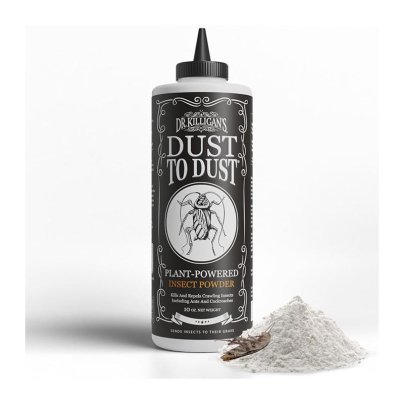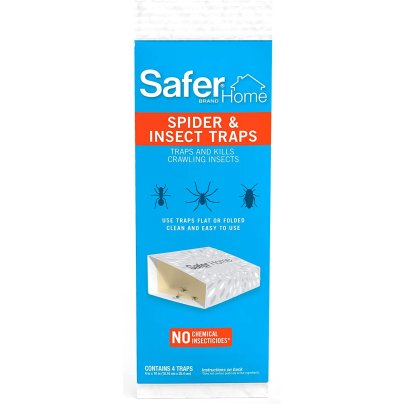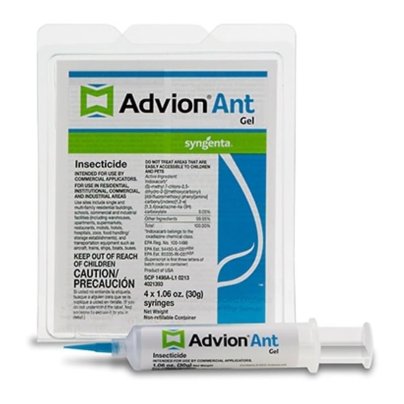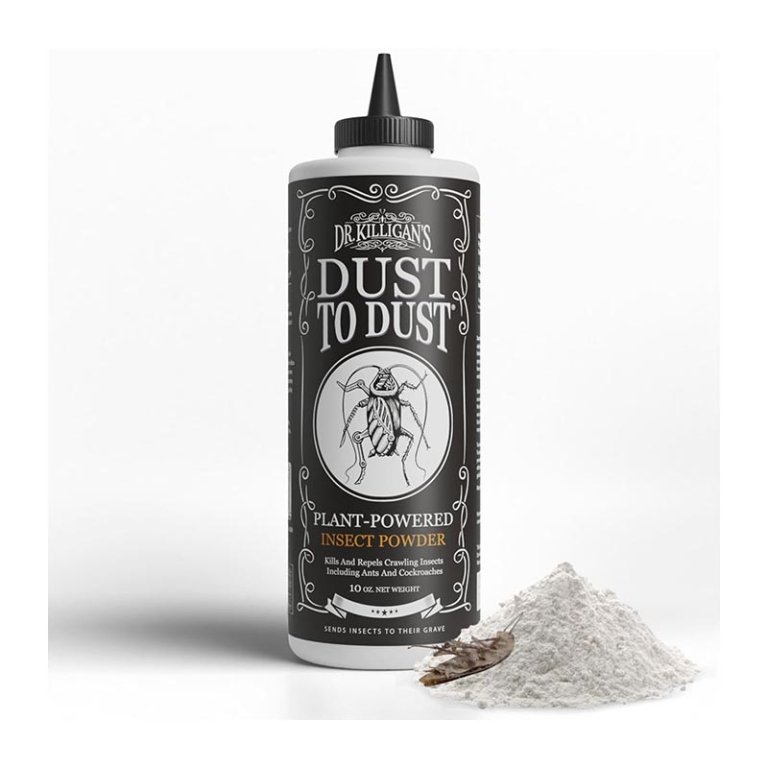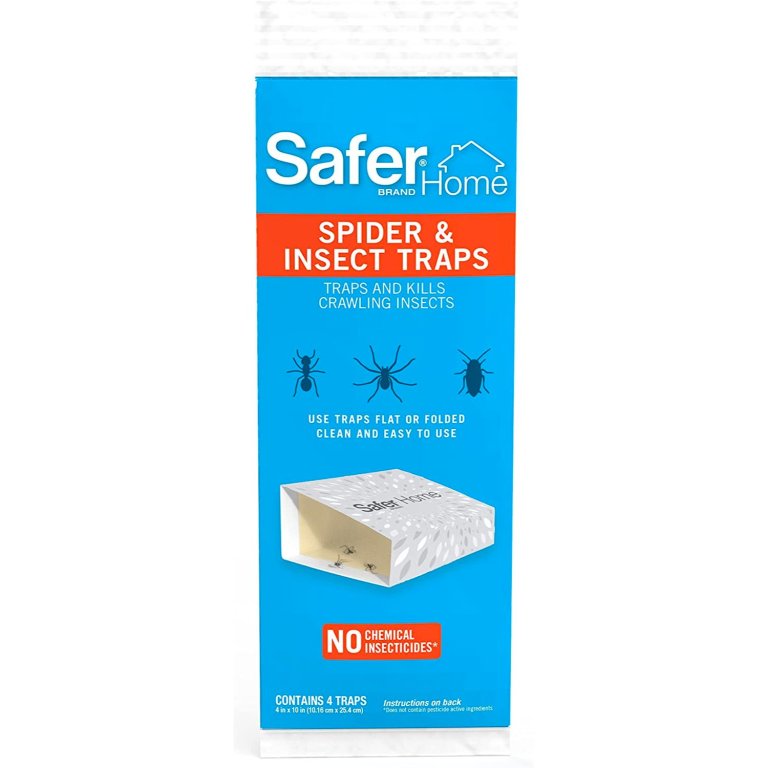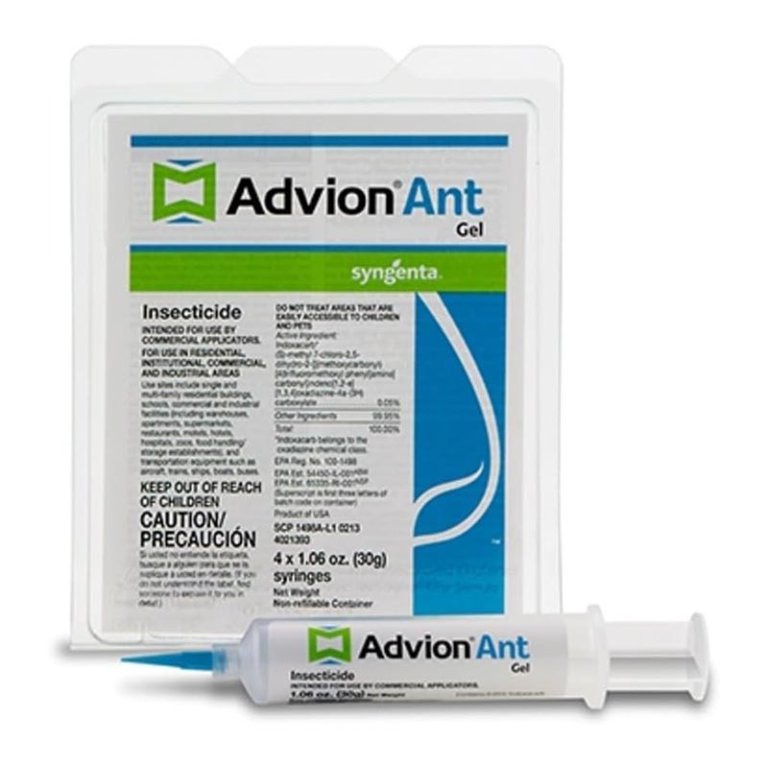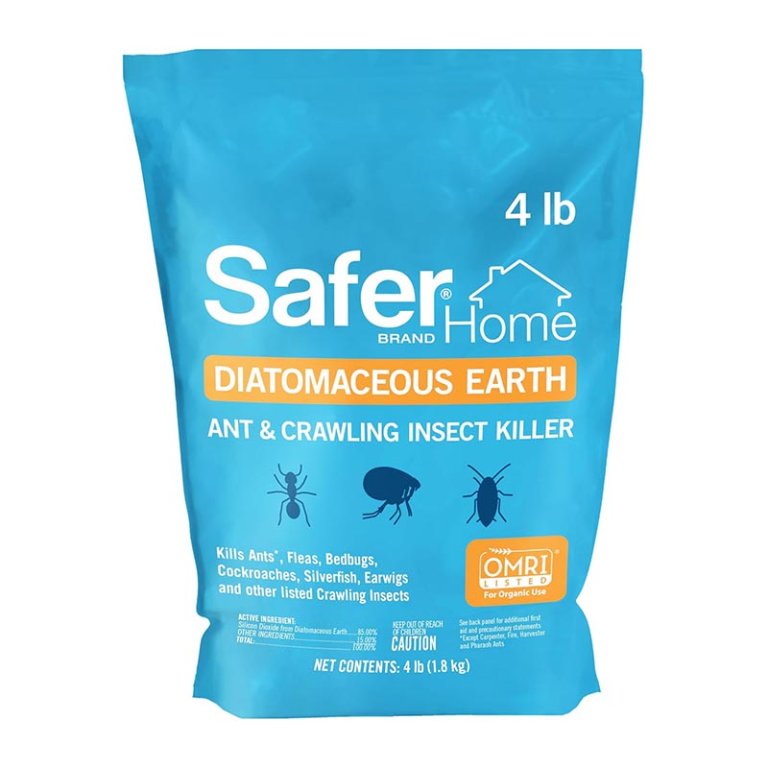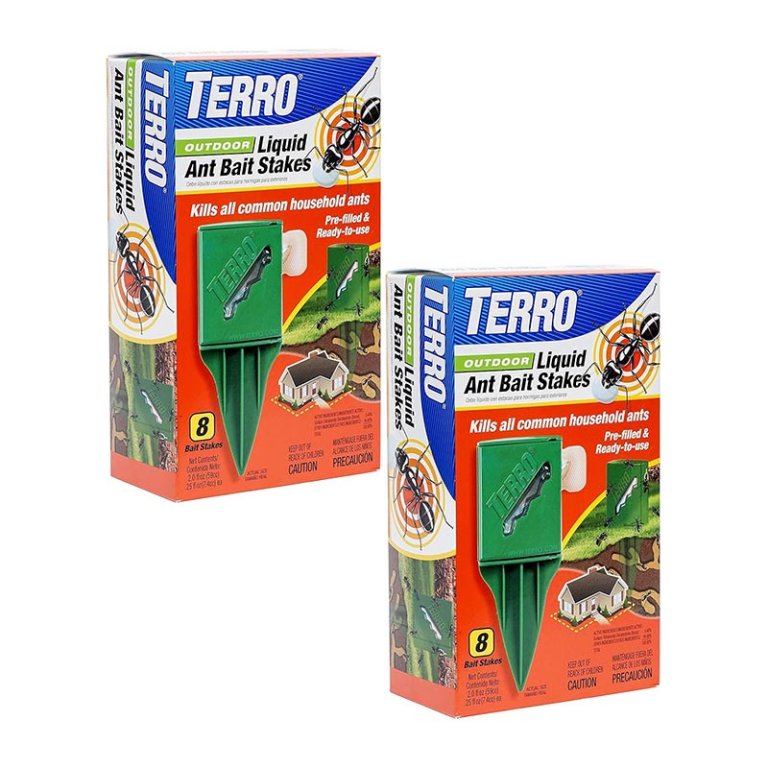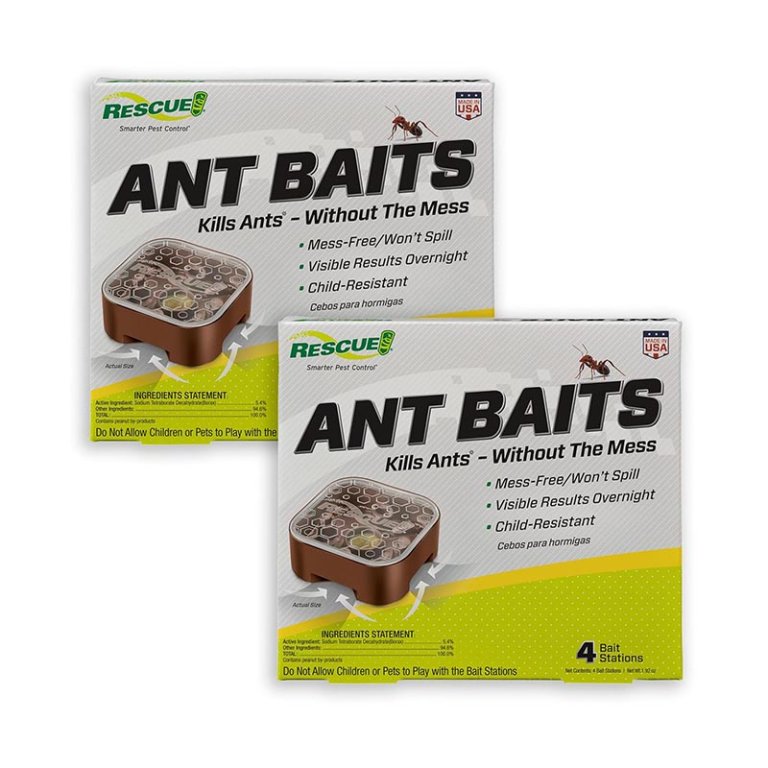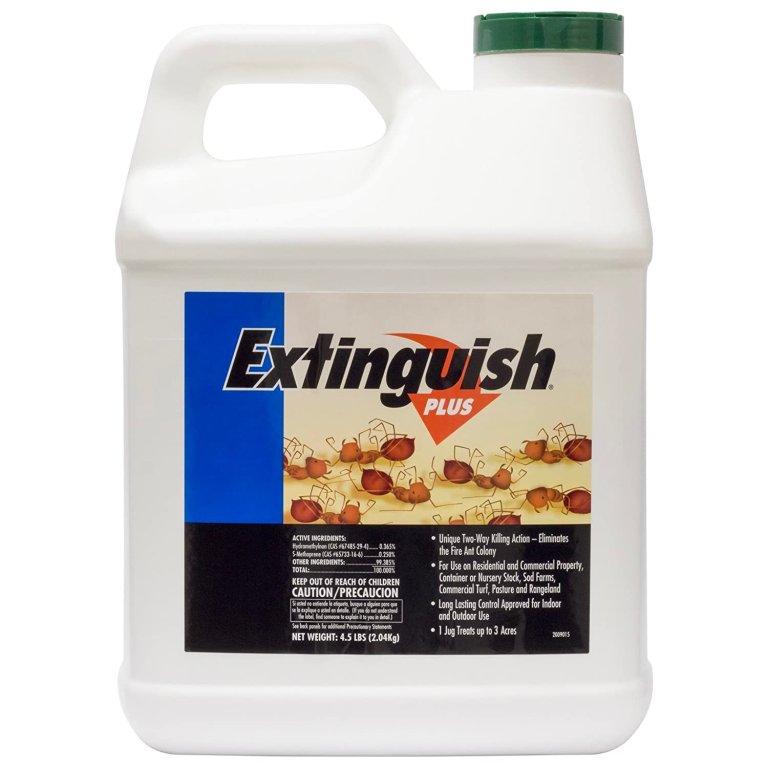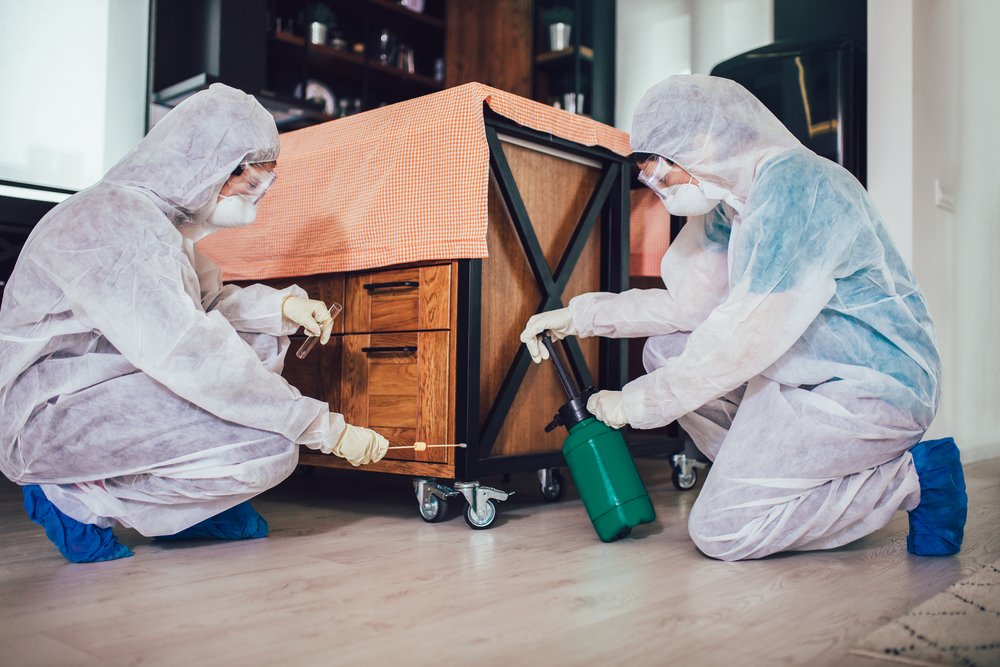
We may earn revenue from the products available on this page and participate in affiliate programs. Learn More ›
The Earth is home to some 20 quadrillion ants, making it essential to have a hard-working ant killer on hand. These pests can damage a home and contaminate food with bacterial- and disease-causing organisms, including Salmonella. Some species, such as fire ants, may even attack pets and people.
Ant control products come in a variety of application methods, including powders, sprays, gels, bait, and traps, and can stop or prevent ant infestations. Ant killers can have synthetic chemical formulas or use natural ingredients. After reviewing many of the top ant pest control products on the market, our top pick is Dr. Killigan’s Dust to Dust Powder. It’s people-, pet-, and plant-friendly when used as directed and can be applied as a dust or made into a liquid spray.
For expert guidance on combatting ants, we interviewed Daniel Baldwin, a Board-Certified Entomologist at Hawx Pest Control, headquartered in Ogden, Utah. Read ahead for key tips on identifying the type of ants you’re dealing with and learn how to choose the best ant killer for your home or backyard.
- BEST OVERALL: Dr. Killigan’s Dust to Dust Insect Powder
↓ Jump to Review - BEST BANG FOR THE BUCK: Safer Brand Safer Home SH400 Indoor Ant Traps
↓ Jump to Review - UPGRADE PICK: Syngenta 53204 Advion 30 Gram Ant Gel
↓ Jump to Review - BEST BARRIER: Safer Brand 51703 OMRI Listed Diatomaceous Earth
↓ Jump to Review - BEST FOR OUTDOORS: Terro T1812 Outdoor Liquid Ant Killer Bait Stakes
↓ Jump to Review - BEST BAIT: Rescue! Ant Baits Indoor Ant Killer
↓ Jump to Review - BEST FOR FIRE ANTS: Extinguish Plus Fire Ant Bait
↓ Jump to Review
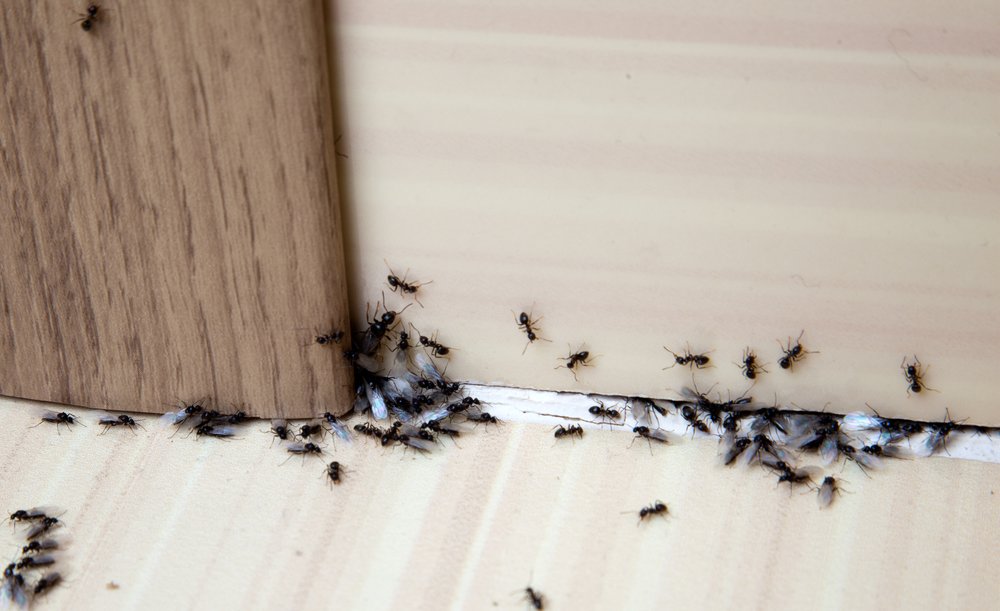
Before You Buy an Ant Killer
When ants invade a home, the first thing most people think about is how to get rid of the infestation. However, it’s also crucial to consider the environmental and health effects of certain products to avoid purchasing an ant killer known to be harmful to people, pets, and any animals that feed on ants. Some ant killers can even affect soil, groundwater, and nearby rivers or lakes, resulting in severe threats to the health of the local wildlife population.
Before selecting a powerful ant killer, consider investing in an insect repellent to keep the ants away without killing them. There are also eco-friendly ant baits, diatomaceous earth-barrier protection, an enclosed bait station filled with liquid ant bait, and granular ant baits that draw ants into the bait station.
Ant Killer Comparison
| Product | Type | Active Ingredients | Application |
|---|---|---|---|
| Dr. Killigan’s Dust to Dust Insect Powder | Slow-acting ant killer | Peppermint oil and rosemary oil | Dust (dry or wet application) |
| Safer Brand Safer Home SH400 Indoor Ant Traps | Slow-acting ant killer | N/A | Ant traps |
| Syngenta 53204 Advion 30 Gram Ant Gel | Colony killer | Indoxacarb | Gel |
| Safer Brand 51703 OMRI Listed Diatomaceous Earth | Slow-acting ant killer | Diatomaceous earth | Dust |
| Terro T1812 Outdoor Liquid Ant Killer Bait Stakes | Colony killer | Borax | Bait stations |
| Rescue! Ant Baits Indoor Ant Killer | Colony killer | Borax | Bait stations |
| Extinguish Plus Fire Ant Bait | Colony killer | Hydramethylnon and s-methoprene | Granular bait |
Our Top Picks
This lineup of top ant killers below can help folks hone in on the most effective pest control for their home or yard.
Best Overall
Dr. Killigan’s Dust to Dust Insect Powder
What We Like
- Safe for people, plants, and pets
- Kills over 100 insect types, including ants
- Versatile application methods
- Utilizes plant-powered ingredients
What We Don’t Like
- Some user complaints regarding the bottle’s application nozzle
- Pricey compared to other ant killers
Specs
- Type: Slow-acting ant killer
- Active ingredients: Peppermint oil and rosemary oil
- Application: Dust (dry or wet application)
Finding effective insecticides that wipe out ants without posing safety risks to people or pets can be difficult. Fortunately, Dr. Killigan’s Dust to Dust Insect Powder eliminates more than 100 insect species, including many common types of ants, utilizing its essential oil nanotechnology. It won’t harm people, pets, or plants when used as directed.
This dust can be applied as a barrier around the ant-infected space or made into an ant spray by mixing one part powder with 16 parts filtered water in a spray bottle. It can kill on contact and residually for up to 30 days, offering protection against many types of crawling and flying insects.
Get the Dr. Killigan’s ant killer at Amazon or Dr. Killigan’s.
Best Bang for the Buck
Safer Brand Safer Home SH400 Indoor Ant Traps
What We Like
- Safe for use around kids and pets
- Simple to set up along ant travel routes
- Traps ants, spiders, roaches, and other crawling insects
What We Don’t Like
- Not effective against the nest or colony
Specs
- Type: Slow-acting ant killer
- Active ingredients: N/A
- Application: Ant traps
Those in the market for an alternative to strong chemical insecticides at a budget price might want to check out Safer Brand Ant Traps. These traps employ a powerful adhesive to trap ants physically, resulting in dehydration, starvation, and eventual death. The traps are safe to use around kids and pets, though it’s still recommended to set them up in areas that are out of reach.
While ant traps cannot kill the queen of the colony to eradicate the infestation at the source (because worker ants don’t bring poison back to the nest), they are an effective method for controlling pesky ant populations. These traps are also effective against spiders, roaches, centipedes, and many other crawling insects.
Get the Safer Brand Safer Home ant killer on Amazon, Tractor Supply Co., or at The Home Depot.
Upgrade Pick
Syngenta 53204 Advion 30 Gram Ant Gel
What We Like
- Bait is carried back to the colony
- Controlled application reduces the chance of toxic runoff
- Odor- and stain-free formula
- Works as a carpenter ant killer
What We Don’t Like
- Indoxacarb poses a risk to people and animals
Specs
- Type: Colony killer
- Active ingredients: Indoxacarb
- Application: Gel
Ant killers that trap individual worker ants or kill on contact can limit the spread of pest populations, but are not effective at eliminating the nest. For serious ant problems, break out the big guns with Syngenta Advion Ant Gel. This insecticide relies on the synthetic chemical indoxacarb to attract worker ants, which eat and collect the bait, taking it back to the colony to be consumed by the queen and wiping out the entire colony.
The gel is simple to apply in nooks, crevices, and any other areas where ant activity is high. As a nonstaining, odor-free formula, it’s ideal for indoor use, and the gel formula clings, reducing the risk that toxic runoff will affect nearby wildlife. But this ant killer is still harmful if ingested, so it must be used and stored with great care, away from curious children and pets.
Get the Syngenta ant killer on Amazon or Walmart.
Best Barrier
Safer Brand 51703 OMRI Listed Diatomaceous Earth
What We Like
- Mechanical killing prevents ants from building immunities
- Indoor and outdoor application
- Effective against ants, bed bugs, centipedes, and more
- OMRI listed for organic gardening
What We Don’t Like
- Takes up to 48 hours to see results
Specs
- Type: Slow-acting ant killer
- Active ingredients: Diatomaceous earth
- Application: Dust
To treat pest infestations without harsh chemicals, consider this ant killer by Safer Brand. It kills ants by cutting into the exoskeleton, causing dehydration and eventual death; it also works if ingested and can kill affected ants from the inside. Diatomaceous earth will typically kill ants within about 48 hours.
This ant dust can be scattered indoors or outdoors in locations with high levels of ant activity. Spread it in a border around the home’s entry points or pour it into narrow cracks and crevices to kill existing ant populations.
Get the Safer Brand Diatomaceous Earth ant killer on Amazon, Ace Hardware, The Home Depot, or Walmart.
Best for Outdoors
Terro T1812 Outdoor Liquid Ant Killer Bait Stakes
What We Like
- Waterproof bait stakes suit outdoor use
- Kills a wide range of ant species
- Transparent panel reveals bait amounts in each station
What We Don’t Like
- Not effective for indoor infestations
Specs
- Type: Colony killer
- Active ingredients: Borax
- Application: Bait stations
When a yard is overrun with untreated ant colonies, home infestations may soon follow. Instead of waiting for the ants to move inside, consider employing Terro Outdoor Liquid Ant Killer Bait Stakes. Their active ingredient, sodium tetraborate decahydrate (borax), is housed in an enclosed waterproof compartment that makes these stakes ideal for outdoor use.
Insert the stakes in the yard to attract worker ants that will collect the liquid ant poison bait and bring it from the stations to the nest. Borax quickly and effectively kills ants and ant colonies when shared with the queen and the rest of the colony, but it will not harm the environment. Each stake has a transparent panel showing the current level of ant-killing solution. When the bait runs out, replace it with a new bait stake for continuing protection from ant infestations.
Get the Terro ant killer on Amazon (2-pack), The Home Depot (1-pack), or Walmart (2-pack).
Best Bait
Rescue! Ant Baits Indoor Ant Killer
What We Like
- Child-resistant design
- Ready to use
- Won’t spill or leak
- Results within 24 hours
What We Don’t Like
- Ineffective against carpenter, harvester, fire, or pharaoh ants
Specs
- Type: Colony killer
- Active ingredients: Borax
- Application: Bait stations
Rescue! Ant Baits are an easy-to-use, mess-free solution to pest problems. The active ingredient, borax, is a powerful ant killer, and the bait is contained in strong, tamper-resistant plastic housing designed to avoid spilling or leaking. (That said, the bait stations should be used and stored out of reach of kids and pets.)
Place the four stations in locations frequented by ants, which will be drawn to the scent of the bait and then share the borax with the queen and the colony. Users can expect results within about 24 hours, but should note that the product isn’t effective against carpenter, harvester, fire, or pharaoh ants.
Get the Rescue! ant killer on Amazon (2-pack) or Walmart (1-pack).
Best for Fire Ants
Extinguish Plus Fire Ant Bait
What We Like
- Highly effective against fire-ant colonies
- Intended for outdoor use
- Target individual ant hills or create entry barriers
- Ample-sized container for yard protection
What We Don’t Like
- Reduced effect if it rains shortly after application
- Toxic to humans and animals
Specs
- Type: Colony killer
- Active ingredients: Hydramethylnon and s-methoprene
- Application: Granular bait
The sting of fire ants, common pests across the U.S., can burn, cause itchy blisters, and in very rare cases result in shock or even death. To combat fire-ant infestations quickly, consider Extinguish Plus Fire Ant Bait—an insecticide with two powerful synthetic chemicals as active ingredients.
The granular fire ant killer, which comes in an ample 4½-pound bottle, is designed to be scattered around fire-ant nests or used as a barrier across entry sites to prevent the pests from accessing the home. This ant killer is incredibly effective at wiping out fire-ant colonies, but it is toxic to people and animals, so it must be used and stored with great care. Also, as a granular product, it is not waterproof, so its effectiveness will be greatly reduced if exposed to rain shortly after application. Check weather reports and apply when several days of dry weather are forecast.
Get the Extinguish Plus ant killer on Amazon or Walmart.
Jump to Our Top Picks
Or, DIY Your Own Ant Killer
Want to combat ants without purchasing commercial products, like liquid ant-killer, sprays, and ant baits? Simply mix up a batch of this effective DIY pest control formula of borax, sugar, and water, and create your own bait with cotton balls on a paper plate.
- Fill a small container with ¾ cup warm water.
- Stir in 1 tablespoon of borax and ⅓ cup sugar.
- Mix until the borax and sugar are completely dissolved.
- Soak cotton balls in the solution, then place them on a paper plate.
- Set the paper plate near areas with ant activity.
The sugar will attract ants, and the borax will kill them. Using cotton balls and paper plates helps to keep things tidy.
Need a DIY ant deterrent to prevent future infestations? According to Baldwin, peppermint oil should do the trick. “Studies have suggested that peppermint oil can work as an effective, natural repellent for ants around the home,” he says. “Peppermint oil works by disrupting the ants’ communication and navigation systems, deterring them away from scent.”
How We Chose the Best Ant Killers
The best ant killer can ensure that both the home and garden are amply protected against fire ants, carpenter ants, odorous ants, pavement ants, and more ants. However, we also prioritized pest-control products with formulas that are safe for homes with pets and children while treating ant infestations. Chemicals in these picks, such as boric acid, bifenthrin, indoxacarb, and zeta-cypermethrin, are proven to be effective at killing fire ants, carpenter ants, and other insects for all-around prevention.
The selected products are fast acting, with the full effects of the pest-control solution being delivered immediately or within 72 hours. These pest-control options are also easy to apply or set up with a range of application methods, including diatomaceous-earth ant dust, liquid baits, bait-station traps, and sprays.
In seeking outdoor ant killers, we favored waterproof formulas that remain effective for days or even weeks. This longevity is especially effective with colony killers that attach to the ants, allowing the poison to be carried back to the nest where it can affect the queen and the entire colony.
What to Consider When Choosing the Best Ant Killer
Not all ant killers work the same. Ingredients, how they’re applied, and the types of ants they target can vary, so it’s important to choose an ant control product carefully.
Buyers will want to keep these factors in mind when shopping for ant killers. Whether shoppers want an ant bait or something with a more natural pest control approach, these considerations will help them make the best choice for their home.
Identifying Common Ant Types
Before purchasing an ant killer, shoppers will want to identify the species invading their home or yard, says Baldwin. “There are thousands of ant species in the world but only a few are known to be in or around our homes. Knowing how to identify the type of ant invading your home is the first step in trying to treat them.”
To ID a particular pest, reference AntWeb, an online database of every ant species worldwide. That said, folks in North America most likely will encounter one or more of the following:
- Odorous house ants are small brown or black insects that nest in walls and under floors. They are drawn to sugar and are most active in the spring and summer months.
- Pavement ants are brown or black in color. They commonly swarm over paving tiles in what looks like an epic battle with other pavement ants. Some pavement ants, known as alates (or swarmers), have wings and can fly to begin new colonies.
- Carpenter ants are one of the largest ant species in North America. As the name implies, carpenter ants have a fondness for wood. This destructive species, which contains both swarmers and workers, bores holes in walls, floors, and ceilings, leaving telltale piles of sawdust in their wake.
- Fire ants, which are small and reddish brown in color, build mounds in the yard that look like piles of loose dirt. Fire ants pose the most immediate threat to humans and pets, as their painful sting produces a burning sensation as well as swelling and itching. Those allergic to insect stings must be especially careful, since fire-ant venom can cause swelling of the throat and trouble breathing.
Types of Ant Killers
Ant killers come in three main types: colony killers, kill-on-contact pesticides, and slow-acting ant killers, each of which uses different active ingredients.
Colony Killers
Colony killers typically use bait to draw insects in with attractive scents and tastes and provide small pieces of poisoned bait that ants can carry back to the colony. Active ingredients like fipronil or hydramethylnon have a delayed effect, which allows the worker ant to carry or ingest the bait without dying immediately.
Therefore, the ants either return the bait to the nest for consumption or die within the nest, where their bodies release the poison. Colony killers are generally considered the best option when users are unsure of the nest’s location.
Kill-On-Contact Pesticides
Kill-on-contact pesticides use active ingredients such as deltamethrin or D-limonene to kill ants and other insects when applied directly. The ingredients can destroy the nervous system or exoskeleton of individual ants, but ants do not carry the product back to a nest. Due to this limitation, kill-on-contact solutions are best for perimeter defense or if the nest is visible.
Slow-Acting Ant Killers
Slow-acting ant killers, like diatomaceous earth, do not wipe out the colony because the transference between ants is relatively limited. These ant killers can take 1 or 2 days to kill the affected ants, but they tend to be more environmentally friendly and safer for use around people and pets.
Active Ingredients
Ant killers either have a delayed onset or work instantly, depending on the active ingredient. For serious infestations that include daily sightings of 10 or more ants in a given area, both an instant killer and a delayed-onset poison to target the nest can knock out the problem.
Borax, hydramethylnon, and fipronil have delayed onset, allowing ants to gather the poison and return it to the colony and distribute it. They also signal other ants to go retrieve more poison.
Delayed-onset ant killers poison within 24 to 72 hours; however, the length of time needed to destroy a nest depends on poison placement, nest population, and many other factors. In general, delayed-onset poisons should be used continually until the bait is no longer being taken and ants are no longer seen.
The chemical deltamethrin is among the active ingredients that work immediately by interfering with ants’ central nervous systems. For a natural alternative, D-limonene, which is made of up to 95 percent of the components in orange-peel extract, deteriorates the coating of the respiratory system, causing ants to suffocate.
Application Methods
Ant killers can be applied in a wide variety of ways. Choose the method that suits the location and severity of the infestation as well as the makeup of the household.
- Bait stations are small plastic containers into which ants enter, grab a piece of poisoned bait, and march back home none the wiser. To keep kids and pets away from harmful poisons, place bait stations in low-traffic areas, such as behind appliances or in a crawl space.
- Gel baits are squeezed into cracks or behind appliances. Ants slowly consume the gel over time, sealing their colony’s fate.
- Liquid baits can be suspended on small stakes in the yard. A diagonal opening ascends like a staircase, allowing ants to take bait from each step of the access hole at the same time. Liquid ant-killer bait can also be used in simple bait stations.
- Granule bait may be sprinkled in or around a nest. Ants grab the individual granules and return to the colony.
- Sprays can be aimed directly at ants or applied as a surface poison that is absorbed through the ants’ exoskeletons. If you have furry friends in the home, look for an ant spray safe for pets.
- Ant traps that work best for trapping crawling insects feature a strong adhesive rather than a chemical insecticide. These can be placed in frequent paths of ant travel.
- Ant dust is a powder that kills through contact or ingestion. It can be used to create a perimeter around a home or to seal off cracks and other entry points.
Additional Features
Prior to treating an ant infestation, consider the safety of people and pets in the home. Some bait stations and gels use bright colors to call attention to their threat, but these colors can attract children and animals looking for a toy or treat. Put bait stations only where kids and pets can’t access them. Sprays and ant dust can be absorbed through household members’ skin, posing a serious risk if used in high-traffic areas.
Fortunately, D-limonene, the natural active ingredient in some kill-on-contact pesticides, is harmless to humans and pets. However, it’s not as potent against ants as some synthetic chemical insecticides, and it won’t be useful against an unseen nest.
Ant killers may include extra features such as stay-fresh tabs that keep the bait as potent as possible or helpful applicators, like a syringe for gels or a shaker for ant dust. Bait stakes work out in the yard or garden, and some outdoor insecticides are encased in a waterproof container to keep the active ingredient from being washed away.
FAQs
Those who still want more information on the best ant killers and how they work can read on for answers to several commonly asked questions about these pesticides.
Professionals rely on a variety of products based on the location and severity of the infestation. Common active ingredients used by professional exterminators include abamectin, cyfluthrin, fipronil, permethrin, bifenthrin, hydramethylnon, pyrethrum, and boric acid.
You can get rid of an ant infestation using contact ant killers as well as ant baits, which lure the insects in and allow them to bring the poison back to the nest. This two-fisted approach can immediately kill the ants you see as well as destroy the entire colony.
Products with the active ingredient D-limonene are environmentally safe and nontoxic to people and animals.
Why Trust Bob Vila
Bob Vila has been America’s Handyman since 1979. As the host of beloved and groundbreaking TV series including “This Old House” and “Bob Vila’s Home Again,” he popularized and became synonymous with “do-it-yourself” home improvement.
Over the course of his decades-long career, Bob Vila has helped millions of people build, renovate, repair, and live better each day—a tradition that continues today with expert yet accessible home advice. The Bob Vila team distills need-to-know information into project tutorials, maintenance guides, tool 101s, and more. These home and garden experts then thoroughly research, vet, and recommend products that support homeowners, renters, DIYers, and professionals in their to-do lists.
Quoted Experts
| Source’s name | Daniel Baldwin |
| Title | Board-Certified Entomologist and Vice President of Technical Services |
| Pronouns | He/Him |
| Business name / location | Hawx Pest Control |
| Type of business | Pest Control |
| Website | https://hawxpestcontrol.com/ |
| https://www.linkedin.com/in/daniel-a-baldwin/ | |
| Contact information | https://app.qwoted.com/sources/daniel-baldwin info@hawxservices.com |
| Date of interview/your name | 5/20/25/Katie Barton |
| Source of info | Qwoted |
